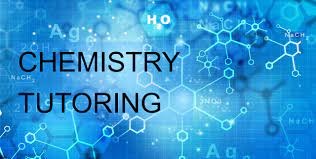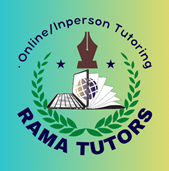Chemical Bonds Made Simple: A Chemistry Tutor's Guide for Easy Understanding

Chemical bonds are the forces that hold atoms together in molecules. They are essential for understanding the structure and properties of matter, as well as the reactions that occur between different substances. However, many students need help with chemical bonds and learning. That's why you need a chemistry tutor to help you master this topic quickly and confidently.
In this blog post, we will explain the basics of chemical bonds, the different types of bonds, and how to identify and draw them. We will also provide tips and tricks to help you ace your chemistry exams and assignments. Whether a beginner or an advanced learner, this guide will help you improve your chemistry skills and knowledge.
What are Chemical Bonds?
A chemical bond is a force of attraction between two or more atoms that results from the sharing or transferring of electrons. Electrons are the negatively charged particles that orbit around the nucleus of an atom, which contains the positively charged protons and the neutral neutrons. The number of protons in an atom determines its atomic number and its identity as an element. The number of electrons in an atom determines its charge and reactivity with other atoms.
Atoms form chemical bonds to achieve a stable configuration of electrons, usually by having eight electrons in their outermost shell. This is known as the octet rule. Some exceptions to this rule are hydrogen, helium, lithium, and beryllium, which only need two electrons to be stable. Some elements, such as phosphorus, sulfur, and chlorine, can have more than eight electrons in their outermost shell using their empty d orbitals. This is known as the expanded octet.
The three main chemical bond types are ionic, covalent, and metallic. Let's look at each of them in more detail.
Ionic Bonds
An ionic bond is a chemical bond that results from transferring one or more electrons from one atom to another. This creates two oppositely charged ions, which are attracted to each other by electrostatic forces. For example, when sodium (Na) reacts with chlorine (Cl), sodium loses one electron and becomes a positively charged ion (Na+). In comparison, chlorine gains one electron and becomes a negatively charged ion (Cl-). These ions form an ionic bond, creating sodium chloride (NaCl), a common salt.
Ionic bonds usually form between metals and nonmetals or between groups of atoms called polyatomic ions. Metals lose electrons and become positively charged ions (cations), while nonmetals gain electrons and become negatively charged ions (anions). Polyatomic ions are groups of atoms that act as a single unit and have a net charge. For example, ammonium (NH4+) is a polyatomic cation, and sulfate (SO4^2^-) is a polyatomic anion.
To identify an ionic bond, look for the following characteristics:
- The compound comprises a metal and a nonmetal or a polyatomic ion.
- The compound has a high melting and boiling point due to the strong electrostatic attraction between the ions.
- The compound dissolves in water and conducts electricity when dissolved or molten due to the free movement of the ions.
To draw an ionic bond, follow these steps:
- Write the symbols of the atoms or polyatomic ions involved and their charges.
- Use a cross to indicate the transfer of electrons from the atom or polyatomic ion that loses them to the atom or polyatomic ion that gains them.
- Write the symbols of the resulting ions and their charges in square brackets.
- Use a dot to indicate the ionic bond between the ions.
For example, to draw the ionic bond between magnesium (Mg) and oxygen (O), you can do the following:
- Write the symbols of the atoms and their charges: Mg^2+ O^2^-
- Use a cross to indicate the transfer of electrons: Mg^2+ -> O^2^- x2
- Write the symbols of the resulting ions and their charges in square brackets: [Mg^2+] [O^2^-]
- Use a dot to indicate the ionic bond between the ions: [Mg^2+]. [O^2^-]
Covalent Bonds
A covalent bond is a chemical bond that results from sharing one or more pairs of electrons between two atoms. This creates a molecule, which is a group of atoms that are held together by covalent bonds. For example, when two hydrogen atoms (H) share one pair of electrons, they form a covalent bond and create a hydrogen molecule (H2).
Covalent bonds usually form between nonmetals or between the same element. Nonmetals tend to share electrons and form covalent bonds to achieve a stable configuration of electrons, usually by following the octet rule. Some elements, such as carbon, nitrogen, and oxygen, can form multiple covalent bonds by sharing more than one pair of electrons. For example, carbon can form four covalent bonds by sharing four pairs of electrons, as in methane (CH4).
To identify a covalent bond, look for the following characteristics:
- The compound is composed of nonmetals or the same element.
- The compound has a low melting and boiling point due to the weak intermolecular forces between the molecules.
- The compound does not dissolve in water or conduct electricity due to the lack of free ions or electrons.
To draw a covalent bond, follow these steps:
- Write the symbols of the atoms involved and their valence electrons as dots around them. Valence electrons are the electrons in the outermost shell of an atom, and they are the ones that are involved in bonding. You can use the periodic table to find the number of valence electrons for each element. For example, hydrogen has one valence electron, oxygen has six, and carbon has four.
- Use a line to indicate the sharing of a pair of electrons between two atoms. Each line represents a single covalent bond. You can use multiple lines to show various covalent bonds, such as double or triple. For example, oxygen forms a double covalent bond by sharing two pairs of electrons, as in oxygen gas (O2).
- Write the symbols of the resulting molecule and any remaining valence electrons as dots around them.
For example, to draw the covalent bond between carbon and hydrogen, you can do the following:
- Write the symbols of the atoms and their valence electrons as dots: C . . . . H.
- Use a line to indicate the sharing of a pair of electrons between each carbon and hydrogen atom: C - H
- Write the symbols of the resulting molecule and any remaining valence electrons as dots: H - C - H . . .
Metallic Bonds
A metallic bond is a chemical bond resulting from the attraction between the positively charged metal ions and the negatively charged free electrons in a metal. This creates a metallic lattice, a regular arrangement of metal atoms held together by metallic bonds. For example, when copper atoms (Cu) form a metallic bond, they create a metallic lattice of copper (Cu).
Metallic bonds usually form between metals or between metal alloys. Metals lose electrons and become positively charged ions (cations), while the electrons become free and delocalized, meaning they can move throughout the metal. This creates a sea of electrons, which surrounds and binds the metal ions.
To identify a metallic bond, look for the following characteristics:
- The compound is composed of metals or metal alloys.
- The compound has a high melting and boiling point due to the intense attraction between the metal ions and the sea of electrons.
- The compound is malleable and ductile, meaning that it can be hammered into sheets or drawn into wires due to the ability of the metal ions to slide past each other without breaking the bond.
- The compound is shiny and lustrous due to the reflection of light by the sea of electrons.
- The compound conducts electricity and heat due to the free movement of the electrons.
To draw a metallic bond, follow these steps:
- Write the symbols of the metal atoms involved and their charges.
- Use a circle to indicate the metallic lattice, and fill it with the metal atoms and their charges.
- Use dots to indicate the sea of electrons around the metal atoms.
For example, to draw the metallic bond between copper atoms, you can do the following:
- Write the symbols of the metal atoms and their charges: Cu^+ Cu^+
- Use a circle to indicate the metallic lattice, and fill it with the metal atoms and their charges: (Cu^+ Cu^+)
- Use dots to indicate the sea of electrons around the metal atoms: . . . (Cu^+ Cu^+) . . .
Tips and Tricks for Mastering Chemical Bonds
Now that you know the basics of chemical bonds, here are some tips and tricks to help you master this topic and ace your chemistry exams and assignments:
- Practice, practice, practice. The best way to learn and remember chemical bonds is to practice drawing and identifying them as much as possible. You can use textbooks, worksheets, online quizzes, flashcards, or other resources that suit your learning style. The more you practice, the more confident and proficient you will become.
- Use mnemonics and memory aids. Mnemonics are techniques that help you remember information by associating it with something more accessible to recall. For example, you can use the mnemonic "Leo the lion says ger" to remember that an atom loses electrons and becomes a positive ion (cation) in oxidation and gains electrons and becomes a negative ion (anion) in reduction. Memory aids help you visualize or organize information, such as diagrams, tables, charts, or flashcards. For example, you can use a periodic table to find the number of valence electrons for each element or a Lewis dot structure to show the arrangement of electrons around an atom or a molecule.
- Review the concepts and terminology. Chemistry is a subject that involves a lot of concepts and terminology that you need to understand and use correctly. For example, you need to know the difference between an atom and an ion, a molecule, a compound, a covalent and an ionic bond, and so on. You also need to know the elements' names and symbols, the compounds' types and formulas, and the rules and conventions for naming and writing them. You can use glossaries, dictionaries, or online resources to review and reinforce your understanding of the concepts and terminology.
- Apply the concepts and skills to real-life situations. Chemistry is not only a theoretical subject but also a practical one that relates to many aspects of our everyday life. For example, you can apply your knowledge of chemical bonds to explain why salt dissolves in water, why metals are good conductors of electricity, why diamonds are stiff and shiny, and so on. You can also use your skills in drawing and identifying chemical bonds to analyze the structure and properties of various substances, such as drugs, food, cosmetics, or materials. Applying the concepts and skills to real-life situations makes chemistry more exciting and relevant and enhances your critical thinking and problem-solving abilities.
Chemistry Tutor in the USA and Canada
If you are looking for a chemistry tutor in the USA and Canada, you have come to the right place. Sulekha Education and Lessons is a platform that connects you with expert tutors in and around your city. Whether you need help with chemical bonds or any other topic in chemistry, you can find a tutor who can meet your needs and expectations.
Sulekha offers you the following benefits:
- Access to an extensive network of qualified and experienced chemistry tutors who can teach you online or in person, depending on your preference and convenience.
- Option to choose a tutor based on their profile, ratings, reviews, availability, fees, and location.
- Flexibility to schedule your sessions according to your pace and learning goals.
- Personalized and interactive learning experience, with one-on-one attention and feedback from your tutor.
- Guaranteed satisfaction and improvement in your chemistry grades and performance.
To find a chemistry tutor near you, all you have to do is:
- Visit the Sulekha Education and Lessons website and enter your city name and the subject you want to learn.
- Browse the chemistry tutors available in your area and compare their profiles, ratings, reviews, fees, and availability.
- Contact the tutor you choose and book a free trial session to assess their teaching style and compatibility.
- Confirm your booking and start learning chemistry with your tutor.
Sulekha Education and Lessons are for students, tutors, and teaching institutes. If you are a chemistry tutor or a teaching institute that offers chemistry lessons, you can register with Sulekha and expand your business and client reach. You can create your profile, showcase your skills and expertise, set your fees and availability, and connect with potential students seeking chemistry help.
Sulekha Education and Lessons is the best place to find and offer chemistry tutorials in the USA and Canada. Whether you want to learn or teach chemistry, you can trust Sulekha to provide you with the best service and support. So, what are you waiting for? Visit Sulekha Education and Lessons today and discover the joy of learning and teaching chemistry.
Searching for Educational Lessons? Let’s make your search simple with professionals!
Take your Educational Lessons to the next level with Sulekha. Boost your online visibility, connect with more clients, and grow effortlessly!
Blogs Related to Educational Lessons

EdQuill Academy: Where Learning Meets Innovation
Education That Goes Beyond the Classroom In today’s competitive world, academic success isn’t just about memorizing formulas or writing essays—it’s about understanding concepts, applying knowledge, and thinking critically. That’s where EdQuill Acad

Explore EdQuill Academy’s Top Courses for Every Grade & STEM Dream
Learning Tailored to Your Goals Not all students learn the same way, and EdQuill Academy knows it. Whether you're in Grade 3 or prepping for AP Physics, the right course can spark curiosity, confidence, and success. EdQuill’s comprehensive catalog

Build the Future in Your Pocket: Mobile App Development Courses on Sulekha
Think about it—when was the last time you went a whole day without using a mobile app? From food delivery to fitness tracking, apps rule our lives. And guess what? They’re not slowing down anytime soon. If you’ve ever thought, “Hey, I’d love to build

How the Right IELTS Tutor Can Change Everything
Crack IELTS with Confidence When it comes to chasing dreams abroad—whether it’s studying in a top university, landing that dream job, or migrating for a better lifestyle—IELTS

Why a Geometry Tutor is Your Secret Weapon to Conquer Shapes, Angles, and More
Remember the first time you saw a triangle, and your teacher said, “This is just the beginning”? You probably didn’t expect that one day you’d be juggling parallel lines, tangents, polygons, and mysterious things like “the sum of the interior angles

Conquer the Curve: How a Calculus Tutor Can Turn ‘Ugh’ into ‘Aha!’
Let’s be honest—just hearing the word Calculus is enough to make some students break into a cold sweat. Derivatives, integrals, limits, and those ever-twisting curves can feel like a foreign language. But what if it didn’t have to be this way? What i




